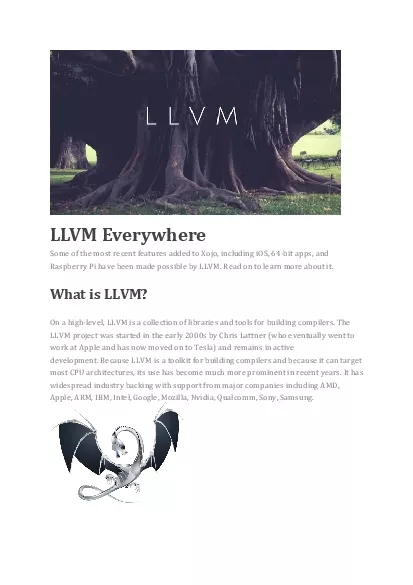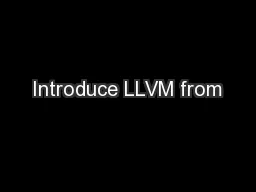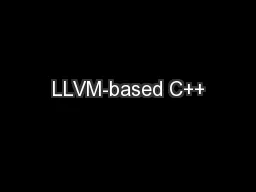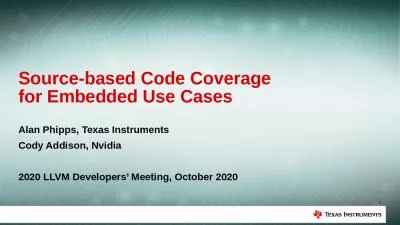PDF-LLVM EverywhereSome of the most recent features added to Xojo includin
Author : oneill | Published Date : 2021-08-09
The first appearanceof LLVM in Xojo was when we started using itto compile and run XojoScript code 2010 Laterwe used LLVM to build iOS apps 2014 64bit apps for x86
Presentation Embed Code
Download Presentation
Download Presentation The PPT/PDF document "LLVM EverywhereSome of the most recent f..." is the property of its rightful owner. Permission is granted to download and print the materials on this website for personal, non-commercial use only, and to display it on your personal computer provided you do not modify the materials and that you retain all copyright notices contained in the materials. By downloading content from our website, you accept the terms of this agreement.
LLVM EverywhereSome of the most recent features added to Xojo includin: Transcript
Download Rules Of Document
"LLVM EverywhereSome of the most recent features added to Xojo includin"The content belongs to its owner. You may download and print it for personal use, without modification, and keep all copyright notices. By downloading, you agree to these terms.
Related Documents












![[BEST]-Learn LLVM 12: A beginner\'s guide to learning LLVM compiler tools and core libraries](https://thumbs.docslides.com/987727/best-learn-llvm-12-a-beginner-s-guide-to-learning-llvm-compiler-tools-and-core-libraries-with-c.jpg)
